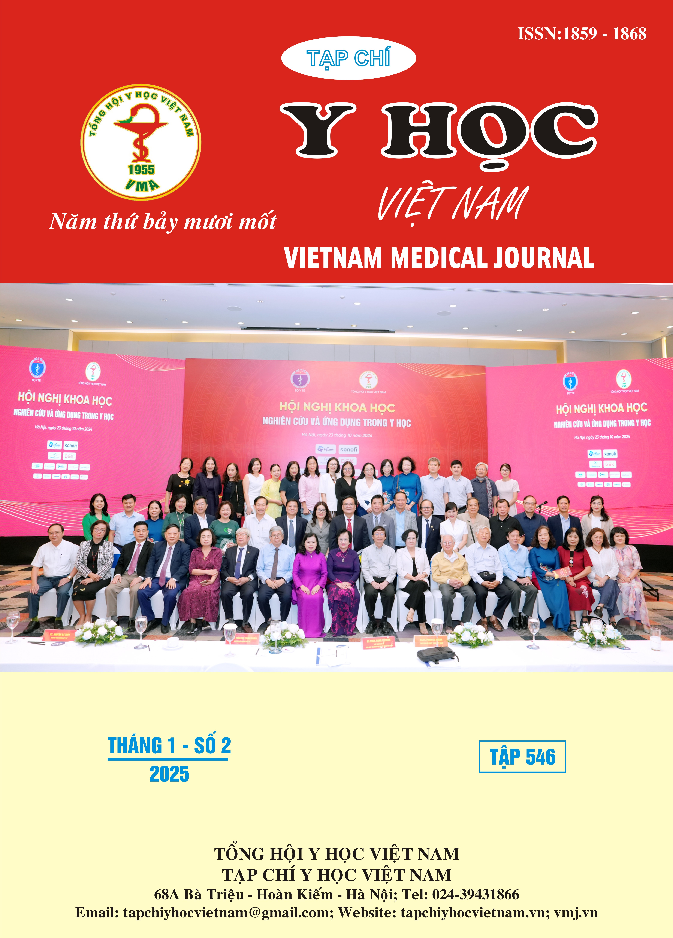APPLICATION OF ODS SCALE AND GUENTHER'S DRY SKIN CLASSIFICATION SCALE TO ASSESS DRY SKIN CONDITION AND RELATED FACTORS IN PATIENTS WITH TYPE 2 DIABETES
Main Article Content
Abstract
Background: Diabetes mellitus (DM) is a group of metabolic disorders characterized by chronic hyperglycemia. Dry skin is a very commonly skin symptom9,10 observed in patients with type 2 diabetes. This raises the need for a clinical tool to assess dry skin in patients with type 2 diabetes. The research: "Application of ODS scale and Guenther's dry skin classification scale to assess dry skin condition and related factors in patients with type 2 diabetes" was conducted to apply and evaluate the advantages and disadvantages of each scale, as well as to survey the occurrence rate, degree of dry skin in patients with type 2 diabetes and related factors, thereby contributing to helping clinicians as well as each patient to be aware of the importance of dry skin problem in patients with type 2 diabetes. Objectives: Application of ODS score and Guenther's dry skin classification scale to examine dry skin condition and related factors in patients with type 2 diabetes. Methols: Cross-sectional descriptive study conducted on a research group of 240 type 2 diabetes patients diagnosed and monitored for outpatient treatment at the Endocrinology Clinic - Examination Department – University Medical Center Ho Chi Minh City Hospital from December 2023 to June 2024. Results: The ODS dry skin score and the Guenther dry skin classification scale help objectively assess the degree of dry skin in type 2 diabetic patients, in which the ODS scale has some advantages in clinical practice. Conclusions: Two scales, especially the ODS scale, can be widely applied in clinical practice to assess the degree of skin dryness in patients with type 2 diabetes in particular and other diseases in general.
Article Details
Keywords
ODS, IDF, ADA, BMI, EEMCO, HbA1c, ICD, NMF, SRRC, WDF, WHO. GUENTHER.
References
2. Laraeni Y, Danuyanti IGAN, Resnhaleksmana E, et al. High antioxidant level in cajanus sajan reduces blood glucose level and improves blood lipid profile of rats as diabetes mellitus models. Int J Health Sci. 2021;5(1):29‐37.
3. Nguyễn Khoa Diệu Vân. Đái tháo đường. Đỗ Gia Tuyển. Bệnh học Nội khoa.5th. Nhà xuất bản y học.2022. tr:387-209
4. de Macedo GM, Nunes S, Barreto T. Skin disorders in diabetes mellitus: An epidemiology and physiopathology review. Diabetol Metab Syndr. 2016;8:63.
5. Huỳnh Công Tuấn. Tỉ lệ các bệnh da và một số yếu tố liên quan trên bệnh nhân đái tháo đường type II tại Bệnh viện Đại Học Y Dược Thành phố Hồ Chí Minh. Luận văn tốt nghiệp bác sĩ chuyên khoa cấp II. Đại học y dược Thành phố Hồ Chí Minh. 2018.
6. Ahmed I, Goldstein B. Diabetes mellitus. Clin Dermatol. 2006;24: 237-246.
7. Seirafi H, Farsinejad K, Firooz A, et al. Biophysical characteristics of skin in diabetes: a controlled study. J Eur Acad Dermatol Venereol 2009; 23: 146–149.
8. Yoon HS, Baik SH, Oh CH. Quantitative measurement of desquamation and skin elasticity in diabetic patients. Skin Res Technol 2002; 8: 250–254.
9. Lima AL, Illing T, Schliemann S, Elsner P. Cutaneous manifestations of diabetes mellitus: a review. Am J Clin Dermatol. 2017; 18: 541–553.
10. Grossman AB. Clinical evaluation of 35% urea in a water–lipid-based foam containing lactic acid for treatment of mild-to-moderate xerosis of the foot. J Am Podiatr Med Assoc. 2011; 101: 153–158.


